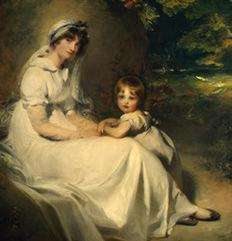
Figure 1.--The dresses worn by boys at the turn of the 19th Century, just like those of their sisters, were very long. Sometimes the boys were idebtified by blue sashes. |

|
Scholars looking at drawings and paintings from the early 19th Century and even photographs by mid-century still frequently have trouble differentiating girls from boys. Oftenthe dresses were identical, in fact many boys wore their sisters handvme downs, so identifying a child's gender by the type of dress is virtually impossible.
|
Dresses for boys and girls were virtually identical at the turn of the Century. Both boys and girls wore Directory-style long dresses which fell to the shoes. The waistline was fasionably high. Some accesories like blus sashes might signal gender, but the fixed color conventions of today's fashions were not as fixed at the time.
Necklines for children's dresses in the early 19th Century were quite low, just like those of their sisters. There seem to have been no gender differences here. Both boys and girls wore dresses with the low necklines. Children were still wearinng dresses with low necklines in the 1840s without gender differentiation. After the turn of the century, dresses with closed collars became increaingly common and weith this development gender differentiation began to appear, but were geneerally inconspicuos until the 1880s.
Some minor differences began to appear as the century progressed and dresses got shorter. Basicalyy at mid-Century there was little difference in the actual dresses, but some of the details and adornments were different.
Material Plaid became popular in the 1840s as Queen Victoria began dressing the young princes in kilts. Plaid was never as popular for girls as it was for boys. Some images show boys and girls wearing dresses with different patterns. An example is American children, we think in the late 1850s.
Bows: Large bows were not popular in the years before the turn of the century. Boys and men did wear bow ties or sometimes string-like ties. These features signal a boy.
Sashes and belts: Both boys and girls wore sashes. Belts were more of a boyish style. Thus dresses which had belts were more likely boys. This convention became more wide spread after the turn of the century.
Some minor differences as the century progressed. The most significant difference, however, appears to have been in the pantalettes worn by the children. As dress lengths became shorter, the pantalettes became more apparent. The ones worn by the girls gradually became much frillier than those normally worn by the boys. Pantalettes were quite long in the first half of the 19th Centiry. The length pf the pantalettes began to become shorter in the late 1840s and by the 1960s were generally worn just a little longer than the dress itself. There was no definite rule about the frills on the pantalettes. It was basically up to the predelections of the mother and some mothers had a preference for frilly children's clothes, for their sons and daughters.
There appears to have been no effort to make dresses specifically designed for boys. Later in the 19th Century, specifically designed boys' dresses did appear, although some mothers still preferred the fancier dresses made for girls. There were still very few differences between dresses for boys and girls at mid-Century. Often one can only look to props, hair tyles, and the context of the photograph for clues. But even these can be misleading. Many mothers for example, did not believe in cutting their son's hair until after he was breeched.
Navigate the Boys' Historical Clothing Web Site:
[Return to Main mid-19th century dress page]
[Introduction]
[Activities]
[Biographies]
[Chronology]
[Cloth and textiles]
[Clothing styles]
[Countries]
[Topics]
[Bibliographies]
[Contributions]
[FAQs]
[Glossaries]
[Images]
[Satellite sites]
[Tools]
[Boys' Clothing Home]